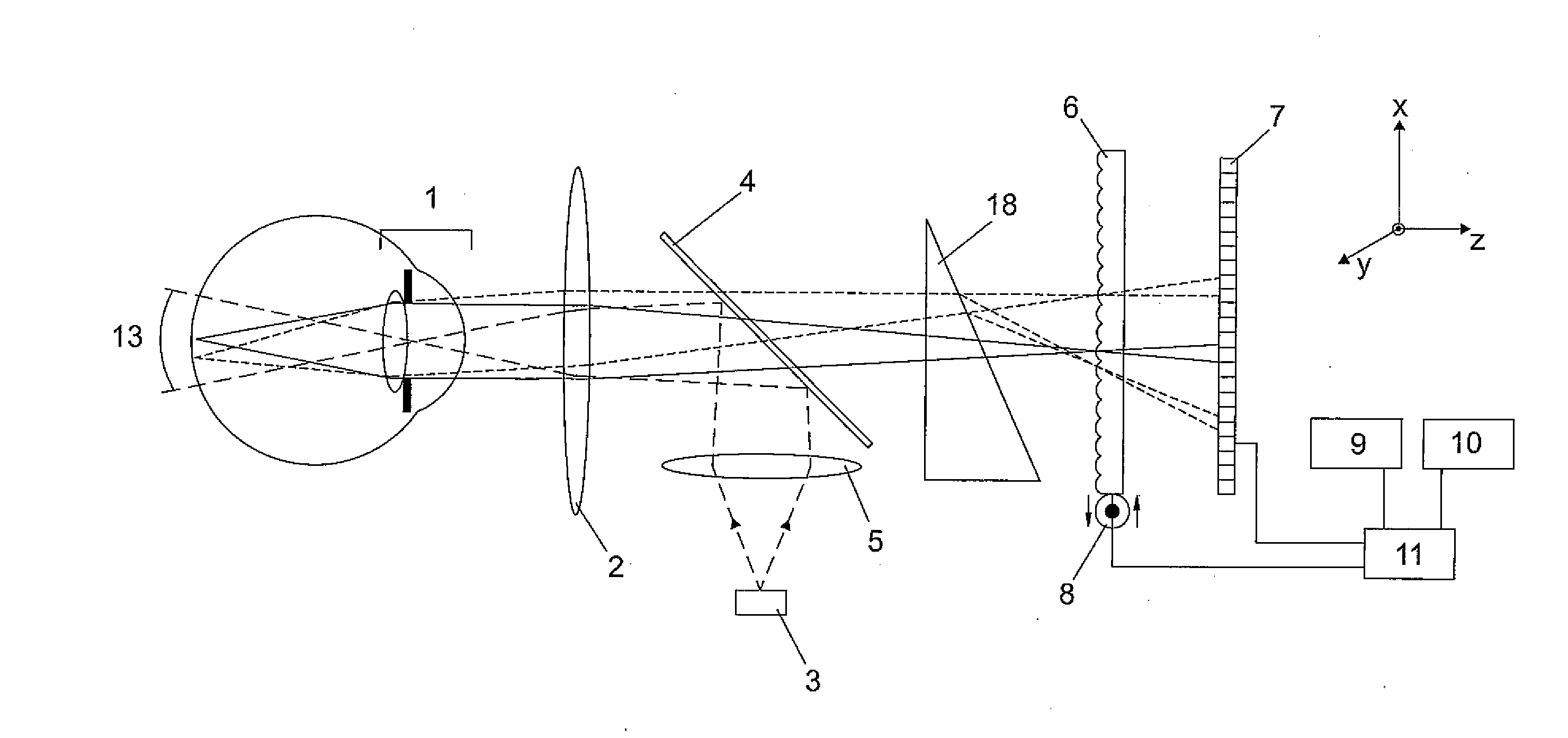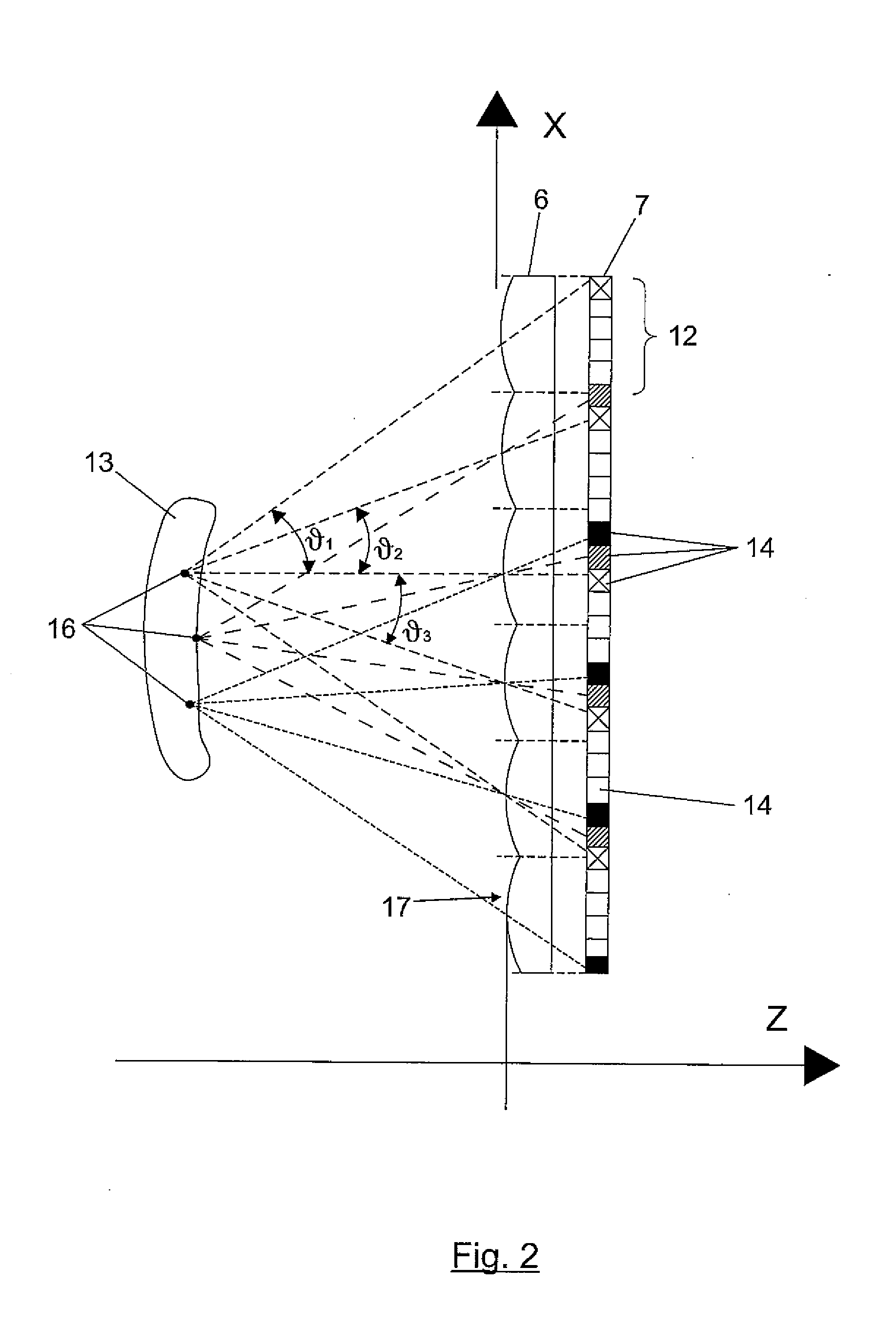Multi-view fundus camera
a fundus camera and multi-view technology, applied in the field of optics and ophthalmology, can solve the problems of stereoscopic image from a monitor, inability to select different planes, and lack of reconstruction optical segmentation, and achieve the effect of high segmentation capacity and high resolution
- Summary
- Abstract
- Description
- Claims
- Application Information
AI Technical Summary
Benefits of technology
Problems solved by technology
Method used
Image
Examples
Embodiment Construction
[0017]An embodiment of the invention which must not be considered with a limiting character is described below in reference to the drawings.
[0018]Applying the concept of integral imaging to the retinal photograph allows recording a large number of views of the fundus (13) in a single photograph (integral photograph).
[0019]As seen in FIG. 1, a light source (3) is projected on the fundus (13) through an optical system (5), (4) and (2) which also considers that of the eye (1). The light reflected by the fundus passes through the microlenses forming the array (6), striking the sensor (7).
[0020]An electromechanical displacement device (8), for example a piezoelelectric device, which transversely displaces the microlens array (6), thus increasing the number of effective microlenses, can be used to increase resolution of the integral imaging system.
[0021]An electronically tunable linear phase modulator (18), also known as phase wedge or electro-optical deflector, (e.g., a liquid crystal di...
PUM
 Login to View More
Login to View More Abstract
Description
Claims
Application Information
 Login to View More
Login to View More - R&D
- Intellectual Property
- Life Sciences
- Materials
- Tech Scout
- Unparalleled Data Quality
- Higher Quality Content
- 60% Fewer Hallucinations
Browse by: Latest US Patents, China's latest patents, Technical Efficacy Thesaurus, Application Domain, Technology Topic, Popular Technical Reports.
© 2025 PatSnap. All rights reserved.Legal|Privacy policy|Modern Slavery Act Transparency Statement|Sitemap|About US| Contact US: help@patsnap.com



